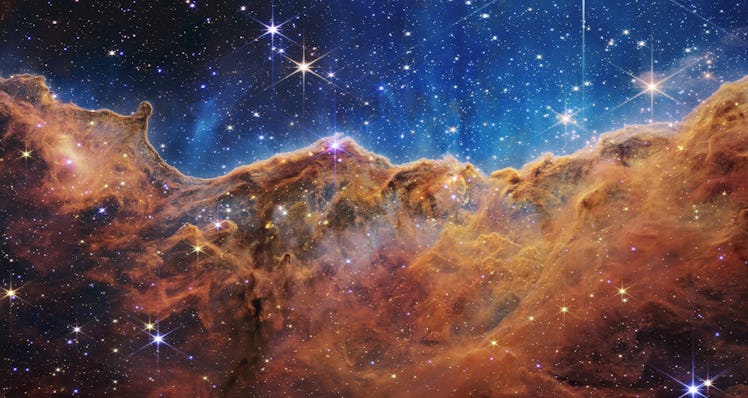NASA Is Now A Space DJ, And Its New Drop Is Out Of This World
There are so many cool things NASA can do with the JWST data, and making music is one of them.

NASA has been on the forefront of some incredible activity recently. First, they had the world talking this past July after releasing the incredible, most detailed images of space yet, obtained by the James Webb Space Telescope (JWST). The agency captured space in great detail in a way we had never seen before. Even the infinitesimally small slices of the vast outer space were more stunning than we could have imagined. Those color-filled images are even more mesmerizing when translated into sound, an artistic project NASA is taking on now.
On July 13, NASA released its first JWST images, including the "Cosmic Cliffs in the Carina Nebula." The image is breathtaking! It's full of gorgeous colors and mountain-like gasses at the edge of a young, star-forming region known as NCG 3324, according to NASA, which is roughly 7,600 light-years away.
The image itself is wow-worthy, but it has now been turned into music through data sonification, and it's just as fantastic. “The soundtrack is vibrant and full, representing the detail in this gigantic, gaseous cavity that has the appearance of a mountain range,” NASA explains in a write-up.
NASA wrote: “The gas and dust in the top half of the image are represented in blue hues and windy, drone-like sounds. The bottom half of the image, represented in ruddy shades of orange and red, has a clearer, more melodic composition.” The music also gets louder the brighter the light is.
NASA translated the data into music to give everyone an exciting way to interact with the findings from the JWST. Turning the data into sonification is also part of NASA’s Universe of Learning projects to make the JWST science more accessible to all. To create the sonification, the data was interpreted into music by a team of musicians and scientists, supported by a member of the blind and low-vision community.
"These compositions provide a different way to experience the detailed information in Webb's first data," Quyen Hart, a senior education and outreach scientist at the Space Telescope Science Institute in Baltimore, Maryland, said in a statement.
"Similar to how written descriptions are unique translations of visual images, sonifications also translate the visual images by encoding information, like color, brightness, star locations or water absorption signatures, as sounds," Hart added.
This isn’t the first time NASA data has been turned into music or sounds. Previously, the agency turned its data on exoplanets into sounds to highlight how the field of space discovery has skyrocketed over the past few decades.
This article was originally published on